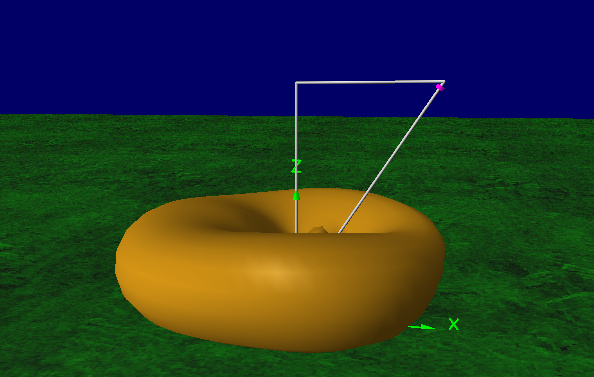This QTH is problematic for antennas. The lot is very narrow, just 25 feet. The house is tall, long, and narrow, just 18 feet wide. It’s kind of like living on a sailboat. The attic is impractical to access. There is an attic trap door but it’s too small for an adult to fit through. There is no back yard, just a steep drop behind the house and the front door opens to the sidewalk. Ground radials are not an option. However, there is a tall tree, part way down the hill just behind the house.
My favorite band is 40 meters so that was the main target. I considered several antennas including an end-fed wire, an off-center fed wire, a vertical dipole, a C-pole, and a loop. Modeling the various antennas with NEC2, the C-pole for 40 meters looked promising. It’s shorter than a dipole and needs no radials but it’s a single-band antenna.
I decided to go with my favorite antenna, the full wavelength loop. The question was if 143 feet of wire could be made to fit. Loops work well, are easy to tune, have high radiation efficiency, and work on all harmonics. Using my laser measure I found that there was just enough space for a triangle running from the upstairs window, to the far branch of the tree (40 feet), then down to an insulator, and back up to the feedpoint at the window.
Using my line launcher and a one ounce lead sinker, I shot non-conductive nylon monofilament line through the tree. As expected, it overshot and landed across the power lines behind the house. I slowly pulled the line back off the power lines and lowered the sinker to the ground. There I attached paracord and hauled it up, over the tree, and to the house. With the paracord I hauled into place the 18 AWG copperweld wire for the antenna. Shown below is the configuration.

This loop performs very well. Loops almost always do. Below are some plots showing the nearly omnidirectional pattern. Polarization is about 80 percent vertical and 20 percent horizontal.
I’m still refining the feed and matching network for the loop. I’ll post an article about that soon. (Edit: Feed info is now published here: https://kw2p.shuttersparks.net/loop-feed-and-measurements/ )
You’ll find me using digital modes, PSK, Contestia, Olivia, Thor, MFSK16, and Hellschreiber at 7070 and 14070 kHz. I hope to see you on the waterfall! 73 de KW2P.




Recent Comments